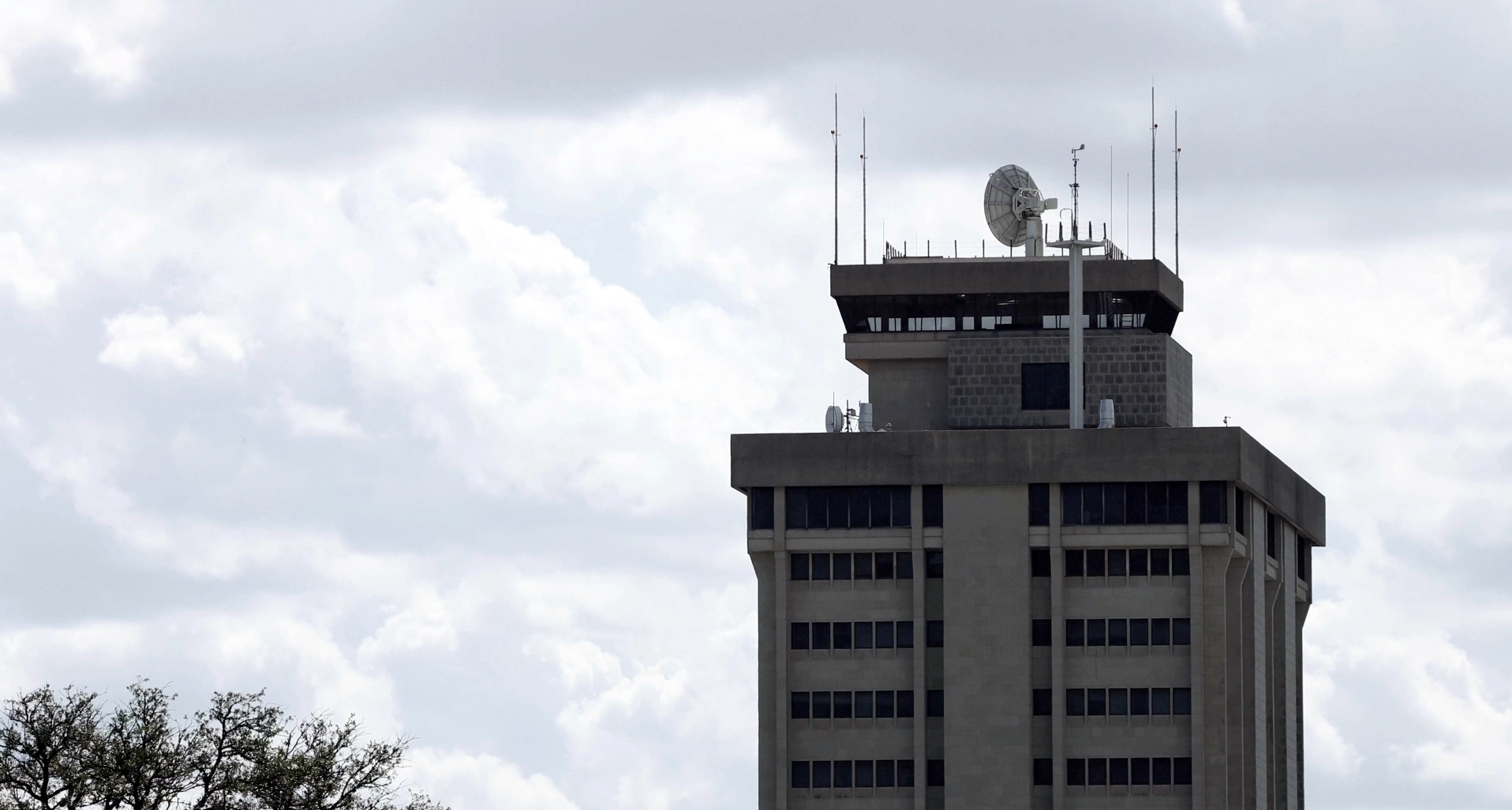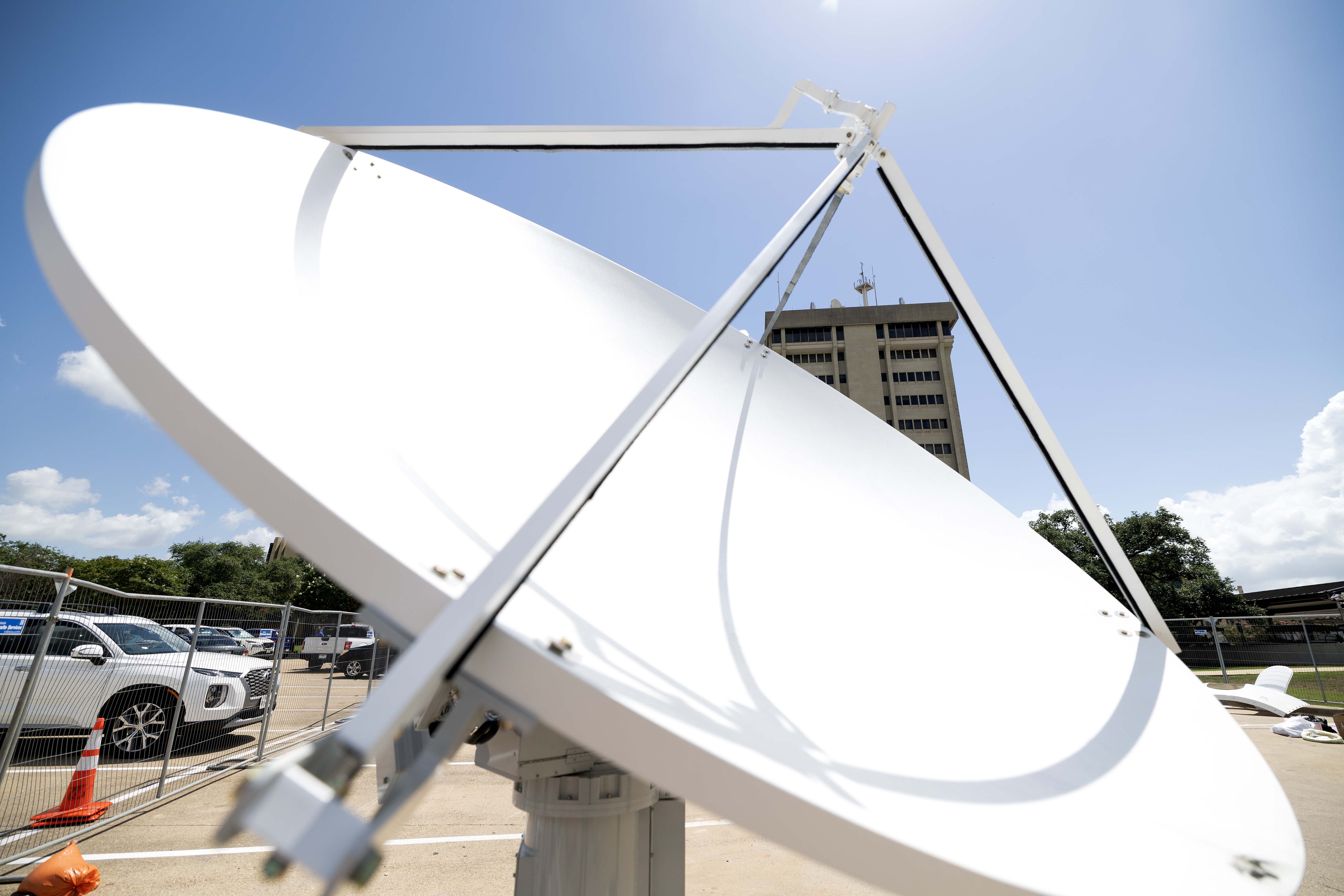
This weekend, the skyline of Aggieland will change significantly with the installation of a new, advanced radar system atop Texas A&M University's David G. Eller Oceanography and Meteorology (O&M) Building.
The cutting-edge radar, a collaborative partnership between Climavision and the Department of Atmospheric Sciences, aims to redefine how students, faculty, and the local community study and respond to weather patterns.
The new radar replaces the aging Aggie Doppler Radar (ADRAD) that has towered over Aggieland since the O&M Building was built in 1973. ADRAD’s most recent major upgrade involving pedestal improvements, a new processor and side dishes removal occurred in 1997.
Weather permitting, the ADRAD removal and new radar installation will take place on Saturday, June 22. The operations will be conducted using a helicopter, which will require an estimated six to seven trips to complete the transformation process.
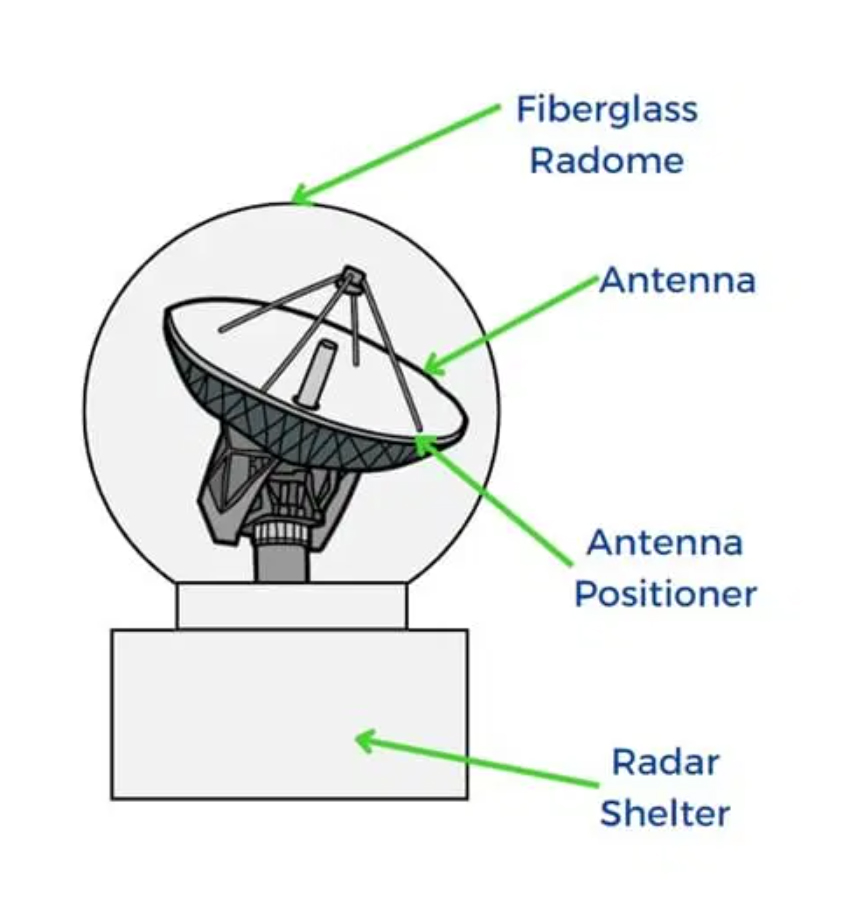
The new radar system is a 1000W X-band radar, operating at a high frequency of 9200 to 9700 MHz. In contrast, the old radar was a 1-megawatt S-band system operating at 2840 MHz. This shift to a higher frequency promises finer resolution in data collection. Additionally, the new radar features an 8-foot antenna housed within a 12-foot radome, a substantial change from the old radar, which lacked the protective enclosure that shields a radar antenna from environmental conditions such as weather, debris and physical damage.
However, the addition of dual-polarization capabilities and continuous operation in the new radar represent the two most significant enhancements over its predecessor. This combination promises to greatly benefit Texas A&M atmospheric sciences students and faculty in their pursuit to study the real-time structure and dynamics of storms, clouds and precipitation with high resolution, both in classroom settings and in research endeavors.
Dual polarization allows radar waves to move in both horizontal and vertical planes, unlike ADRAD's single horizontal polarization. Texas A&M Atmospheric Sciences Professor Dr. Courtney Schumacher illustrates this concept well using the analogy of snakes and dolphins.
"Picture a snake on the ground symbolizing the horizontal polarization of the old radar,” Schumacher explained. “In contrast, the new radar can also behave more like a dolphin, capable of movement in vertical planes as well, enabling observation in both horizontal and vertical dimensions. This capability allows us to perceive hydrometeors in four dimensions, distinguishing between ice, sleet, snow and hail as well as assessing the volume and intensity of rain, among other factors."

In addition, the new radar will operate 24/7, unlike ADRAD. This constant operation means the radar will provide a more comprehensive, high-resolution view whenever weather systems are within range, even if faculty and students are unavailable to operate it — a game changer for research as well as the record.
“The location of the radar at Texas A&M makes it an important radar in observing some of the more interesting and sometimes more dangerous weather phenomena,” said Dr. Don Conlee, an instructional professor in Texas A&M Atmospheric Sciences. “The new radar will offer fresh research datasets for both traditional studies of severe and hazardous weather as well as enhanced opportunities for undergraduates to conduct introductory research using a valuable local dataset.”
The new radar's influence goes beyond academia as well, significantly enhancing weather forecasting and warning services for the local community through expanded radar coverage and improved accuracy. This upgraded capability is crucial for issuing timely and precise weather alerts, potentially saving lives and reducing property damage during severe weather events. Bryan-College Station, previously situated in a "radar gap" region, will now benefit from comprehensive coverage at lower altitudes, enhancing community preparedness and safety.
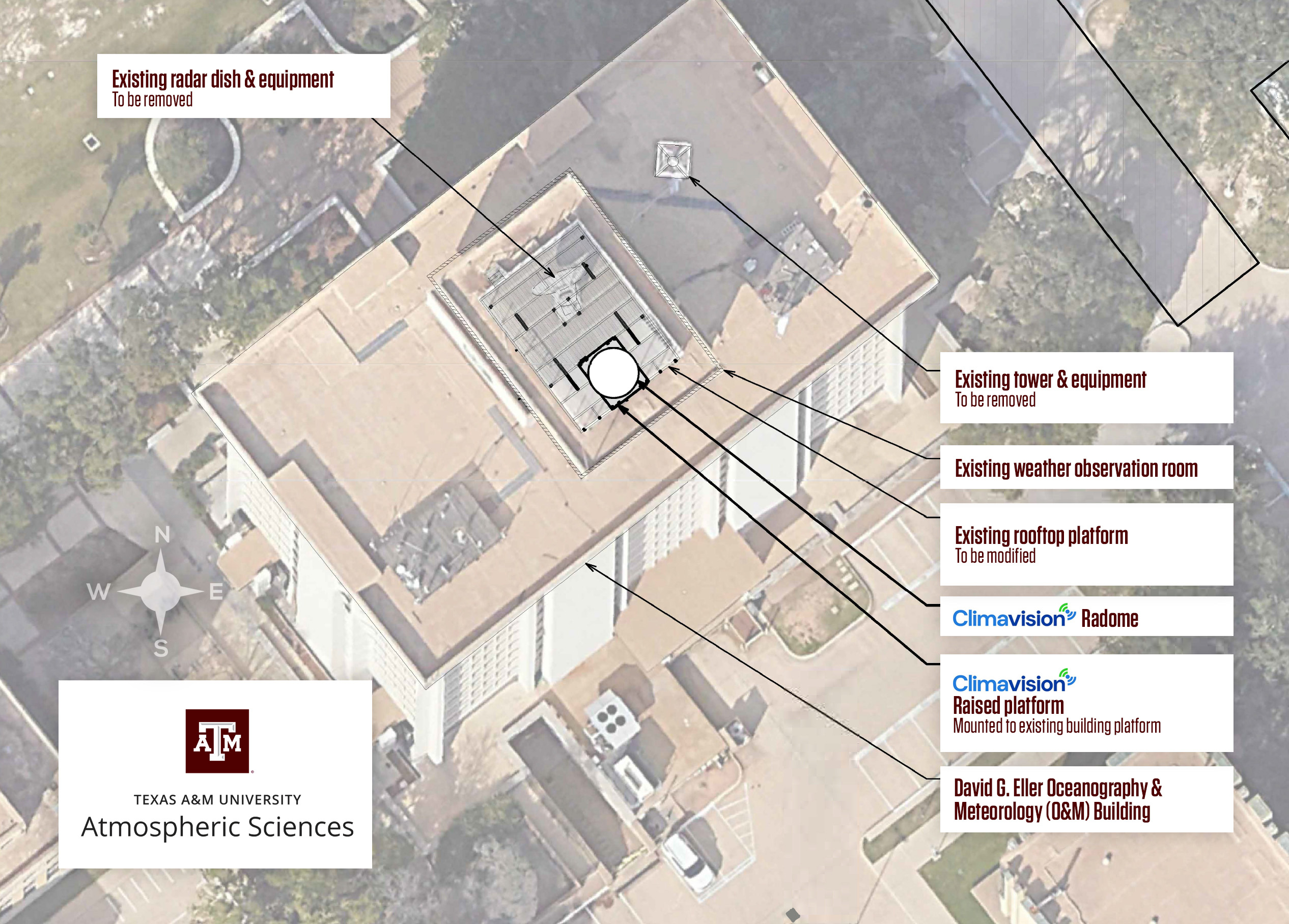
Data from the radar will be available to Climavision’s federal partners, such as the National Severe Storms Laboratory, and other Climavision clients as well as media. Residual benefits aside, however, it's the dual impact on both academic advancements and community safety that has Climavision most enthusiastic about partnering with Texas A&M on the new radar.
"Partnering with Texas A&M on the site to install our gap-filling weather radar is incredibly exciting,” said Chris Goode, CEO of Climavision, which is headquartered in Louisville, Kentucky. “This collaboration not only enhances comprehensive low-level coverage for the university and College Station area but also offers students a hands-on learning experience with cutting-edge data that will have a real impact on the local community."
Climavision’s new radar and partnership with the Department of Atmospheric Sciences marks a new milestone in Texas A&M's rich radar technology legacy, which dates back to the 1960s and has consistently been at the forefront of innovation.
"Texas A&M has had a pioneering role in meteorological radar research for a very long time,” Conlee said. “Aggie professors were instrumental in figuring out the best frequencies and wavelengths for radar use, setting the stage for nationwide advancements dating back to the 1960s. The importance of radar was evident in the construction of the Meteorology Department’s building in 1973, which was designed to accommodate and utilize this crucial technology.”
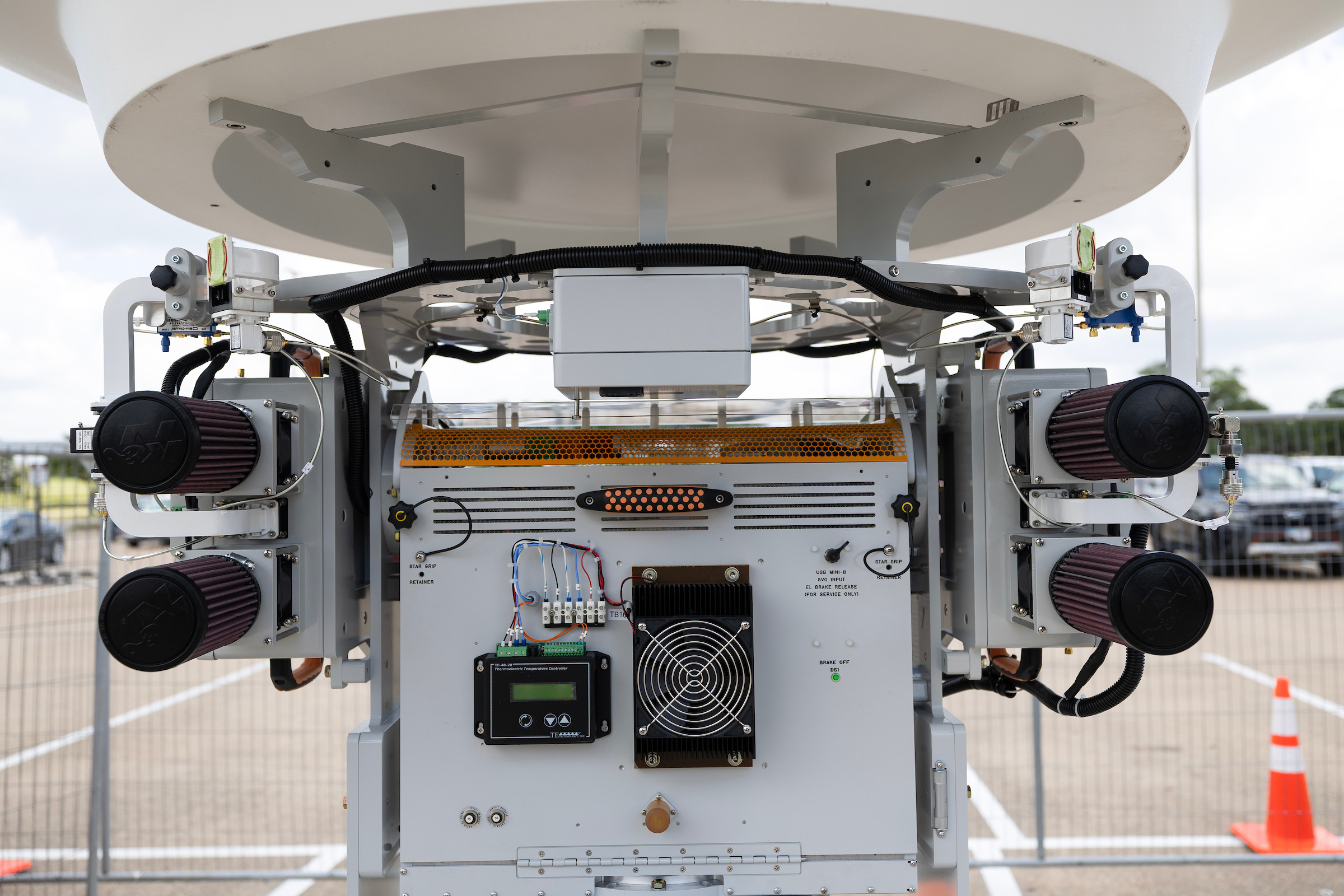
This essential technology has provided Texas A&M faculty and students with numerous cherished memories throughout the history of the outgoing radar, ADRAD. From tracking Hurricane Ike in 2008, to collaborating with Texas A&M biologists to study bat movements using radar technology and, most recently in 2022, playing a major role in issuing tornado warnings in Brazos County, ADRAD has greatly benefited Aggieland during the past half century.
As with any significant weather event, Texas A&M students operated ADRAD during Hurricane Ike and relayed crucial information to the National Weather Service (NWS). In addition to monitoring the data, they ensured the radar's mechanical safety as the hurricane approached the coast while also keeping an eye out for any important data sets the NWS might need.
On March 21, 2022, ADRAD provided emergency assistance to the NWS when the KGRK radar in Williamson County that monitors supercells approaching the Brazos Valley experienced temporary power outages due to a tornado. The first tornado warning of the night, issued for a supercell tracking along the northern Burleson County line, was based on ADRAD analysis. By the next day, seven confirmed tornadoes had occurred in the NWS Houston/Galveston County Warning Area, with ADRAD playing a crucial role in the successful forecasting and warning efforts during this challenging event.
Texas A&M has had a pioneering role in meteorological radar research for a very long time. Aggie professors were instrumental in figuring out the best frequencies and wavelengths for radar use, setting the stage for nationwide advancements dating back to the 1960s.
Through its partnership with Climavision, Texas A&M Atmospheric Sciences aims to significantly enhance its capabilities with the new radar system. The partnership will undoubtedly inspire more students to pursue careers in atmospheric sciences and related fields, attracting bright minds intrigued by the opportunity to engage with cutting-edge technology and high-impact learning experiences.
“The Aggie Doppler radar has served Texas A&M and the community very well over several decades,” said Dr. R. Saravanan, professor and head of Texas A&M Atmospheric Sciences. “As it nears the end of its life, we are happy to welcome the new partnership with Climavision that provides a timely replacement. Our students will have access to state-of-the-art radar data for their meteorology education. In addition, the new radar will fill the ‘radar gap’ Bryan-College Station is in and help the local community be better prepared for severe weather.”
A ribbon-cutting and dedication ceremony is planned for early in the fall 2024 semester, when the radar will be fully operational.
See a related news segment from KBTX-News 3 (June 20) as well as a feature and photographs from the Bryan-College Station Eagle (June 20).
